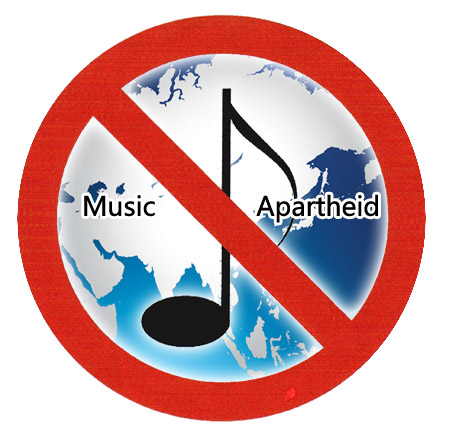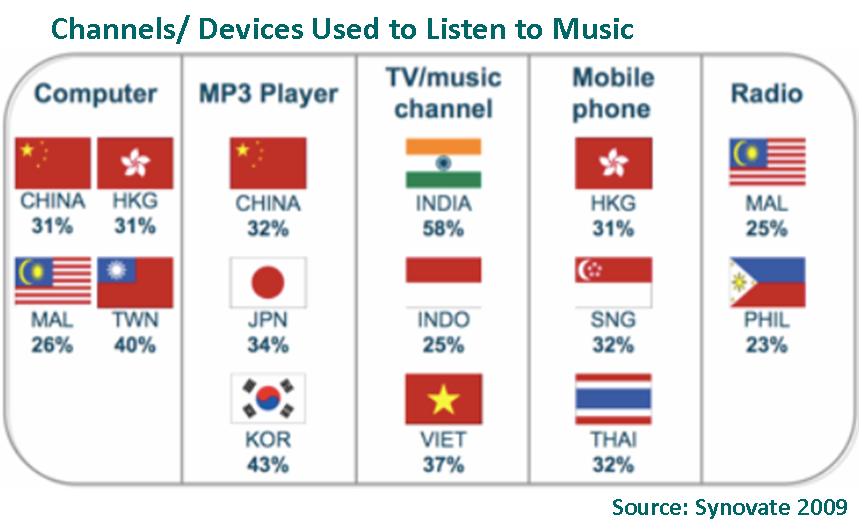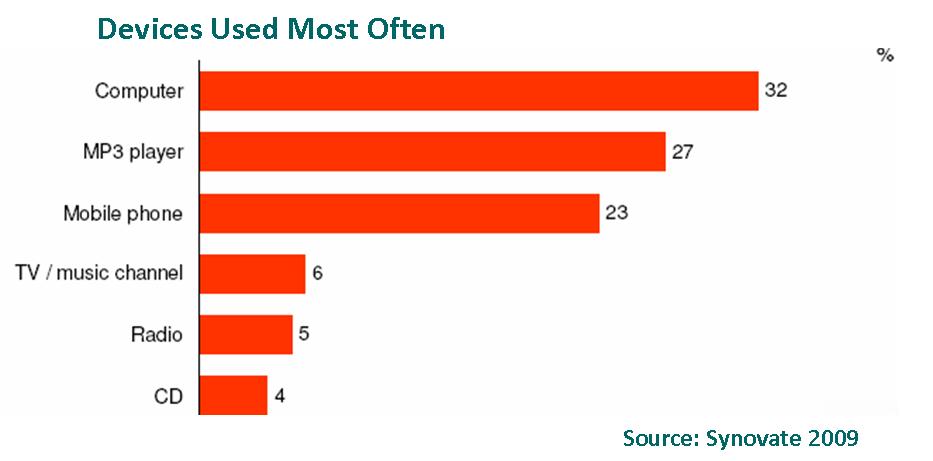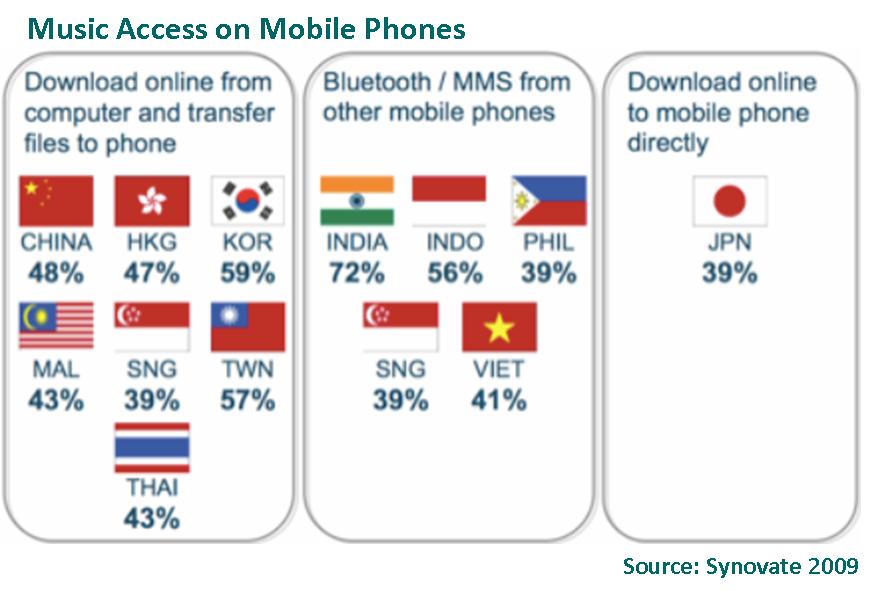Gaming the DMCA Safe Harbor Law for Profit
In January, I was asked to contribute a chapter to the International Association of Entertainment Lawyers (IAEL) 2010 Yearbook which focused on the theme of “Collective Licensing at the ISP Level”. The IAEL 2010 Yearbook edited by Steve Masur of Masur Law and launched at MIDEM in Cannes, polls leading entertainment lawyers in each territory to create a tapestry of the law of collective rights licensing around the world and is certainly worth a read for the various viewpoints on the subject.
With Collective Licensing being mooted as a possible solution to the recording industry’s woes, my view is that in the current environment, it is just a futile attempt to deal with the manifestations of problems, and I have instead elected to highlight what I feel is the major source of attrition and imbalance in the management of intellectual property and its abuse in the digital world – the exploitation of the DMCA Safe Harbor Provision. The following is the full discourse as published in IAEL 2010 Book.
Collective Licensing at the ISP level is undermined by the Safe Harbor Law
Collective licensing at the ISP level has been mooted as the panacea for the ills of the recording industry as it struggles to monetize in the digital age. The concept of voluntary collective licensing in a walled garden environment could have been feasibly executed once, but unfortunately, that is no longer the world we inhabit currently. Digital music content is freely available in digital format not just on the internet but also on devices and parallel networks and most likely via methods yet unknown to the concerned industry – until such time it slams it in the face, just as Napster changed the face of the music industry.
Voluntary collective licensing is a concept that has been championed by the Electronic Frontier Foundation for the past few years and is theoretically a worthwhile option for consideration in its cause. However, in recent years, the abundant supply of free music online, not to mention darknets has made the execution of the concept an uphill task.
Voluntary payment by music fans, voluntary licensing by artists and voluntary bundling by ISPs will probably just be a marginal option next to the plentiful supply of free content. Users on networks are already able to access free music on the internet and do so with no qualms at all, so it is inconceivable that they should be paying for the moral right to access this same music. Enforcements will be next to impossible to implement, not least the RIAA-style witch-hunts as there are plenty of sources which are protected by the Safe Harbor law for users to access free music from.
ISPs and carriers are already protected by the Digital Millennium Copyright Act (DMCA) and specifically the Safe Harbor provision as codified in Section 512 of the US Copyright Act and they realize that the existing access to copyrighted content, especially music—and in the coming years, movies—are the main attractions of the Internet. There is no altruistic motivation for them to work with the content industry or be the bill collector for these industries when they can already enjoy substantial revenues for themselves. There is also no need for ISPs to offer its users a further licence to download all the music they want from the internet when it is tacitly understood that that convenience is already afforded to them as part of their existing internet subscriptions.
It is easy for anyone to upload, access, store and transmit any piece of digital content, copyrighted or otherwise and search engines, verticals and devices further make it extremely easy to access any and all of this material all within the protection of the Safe Harbor provision. Beyond just dumb digital conduits, companies backed by deep-pocketed investors have now sophisticatedly built value around these loopholes and been profiting.
Realizing that voluntary collective licensing is probably unenforceable in the current environment, not least due to the abundant supply of free content brought on by the unintended consequences of the DMCA Safe Harbor law, the record industry has been targeting the most obvious spigot in the content chain—ISPs. They have been campaigning for ISPs to enforce a music tax on their subscribers, but on many fronts an enforced tax opens up a can of worms.
Intellectual property owners including those from the news, games, software, documents, books, music and movie industries and other digital content formats that I cannot even begin to describe can similarly all lay claim to their share from ISPs should a tax be imposed upon users. It can only end up being an orgy of fleecing of subscribers by a Babel-like cohort of tax collectors baying for their pound of flesh, just as mobile carriers globally plundered for years. The role of ISPs was never to be a gatekeeper for the content industry or be liable for any misdemeanours of their users, and this was exactly why the DMCA Safe Harbor provision was introduced in 1998 in the US.
It is thus ironic that this leeway afforded by the Safe Harbor to ISPs has subsequently been manipulated by Service Providers* of all manner and brought the record industry to its knees, which is subsequently acting like a parched man in a desert seeing a mirage, looking back to ISPs and collective licensing to save them.
At its introduction at the advent of widespread internet use, the DMCA Safe Harbor provision was developed mainly to offer immunity to ISPs whose role was mainly as a conduit and it seemed to sufficiently cover the domain. However, as user-generated sites, P2P, BitTorrent and digital devices of all ilk exploded with usage beyond that comprehended by the authors of the Safe Harbor provision, it now seems to be not only inadequate but worse, it is now being openly gamed by Service Providers for the aggregation of copyrighted content or even linking to content uploaded by ‘users’ who are not the actual copyright owners while the perpetrators are protected by the law. U2’s manager, Paul McGuiness was sufficiently aggrieved to label the Safe Harbor provision as the Thieves Charter.
ISP collective licensing is in all probability only a placebo for the ills of the record industry as long as the DMCA Safe Harbor provision remains unfettered and parallel networks outside of the jurisdiction and purview of ISPs including transmission and storage devices and networks continue to be developed and utilized with the insidious primary aim of exploiting copyrighted material.
One of the biggest challenges and incongruences of ISP collective licensing is that it seems to be an attempt at a local solution with the assumption that just like physical media, digital copyrights have to be licensed at the local territorial level without taking into account that the internet is a global access medium.
Europe in the meantime has been pressing ahead with its own tweaking of its DMCA equivalent, the European Union Electronic Commerce Directive, especially with the much discussed and maligned three-strikes ISP directive. Though there are some differences in the EUCD and other variants around the world, the core fundamentals are similar to the DMCA and this will be the focus of our discussion.
It’s not just the realization that every action in a single territory has a global impact, but that developments in a single industry at the digital level can impact upon and reverberate across multiple industries—the music industry has in numerous cases written the ‘how not to do it’ chapter and it is something that we all have to learn from.
Simon Wheeler, Director of Digital at Beggars Group sounds out a warning to the others:
‘Music has been the canary in the coal mine for over a decade, and now we’re seeing that the inevitable is happening to other aligned industries… it’s painful at times to watch them make similar mistakes to the music industry.’
The common thread that links the various industries but most profoundly exhibited in the music industry is the manipulation of the Safe Harbor provision and we examine some of the most high profile legal machinations brought about by the loopholes and abuses of it.
The DMCA Safe Harbor and User Generated Sites
In October 2009, it was reported by numerous news sites that Viacom may well be in possession of emails that proved that YouTube employees had uploaded copyrighted videos. Google has however, long maintained that it respects copyright law and it claims a Safe harbor status with respect to YouTube
There is every possibility that operators of user generated sites have populated their site with music or video content they themselves have uploaded, and this is a likely allegation leveled against YouTube by Viacom. Few other independent labels or studios can afford the legal fees to challenge and painstakingly unearth the smoking gun evidence that will exempt these sites from Safe Harbor protection.
Thus the ongoing Viacom-Google/YouTube legal case represents the most high-profile duel in the conflict of interests that has manifested from the inadequacies of the DMCA Safe Harbor provision and its equivalent legal counterparts in all corners of the world. As a result of the US taking the lead in digital copyright laws with the DMCA, there is every chance that the reverberations from a judicial decision on this case could possibly have a global impact.
The DMCA states that the onus is not on Service Providers to police the use of their services pro-actively but upon notification that material has been made available without the authorization of the copyright owner, they have to “respond expeditiously to remove, or disable access to, the material that is claimed to be infringing upon notification of claimed infringement” in order to maintain immunity.
Service Providers also claim that they are unable to filter any content and the process of delivery of content is automated so as to maintain their right to Safe Harbor. However, it is also obvious that sites like YouTube, Yahoo and Google have always been selectively engaging in the filtering of adult and other undesirable content either on their own accord or at the behest of foreign governments
However, what the DMCA did not count on was that Service Providers themselves would build profitable business around the Safe Harbor provision in a manner which copyright owners would label an abuse of the law. As Viacom has accused YouTube in its lawsuit:
‘YouTube is a significant for-profit organisation that has built a lucrative business out of exploiting the devotion of fans to others’ creative works in order to enrich itself and its corporate parent, Google. Their business model, which is based on building traffic and selling advertising off of unlicensed content, is clearly illegal. In fact, YouTube’s strategy has been to avoid taking proactive steps to curtail the infringement on its site, thus generating significant traffic and revenues for itself while shifting the entire burden—and high cost—of monitoring YouTube on to the victims of its infringement.’
The huge consumer interest in music combined with the convoluted rights clearance process demanded by the record labels and publishers has been a contributory factor in Service Providers opting to hide behind the Safe Harbor option and simply launch “user-generated” music sites. For example, Last.fm and MySpace started off that way and the various incarnations of Grooveshark have employed this method and they now boast a huge collection of tracks for free streaming. Grooveshark remain firmly in the gray zone of the DMCA and their business model does not seem that far removed from that of Google’s YouTube or MySpace, which can also be viewed by cynics as “infringe first and ask for forgiveness later”.
Despite YouTube’s insistence that they are suitably covered by the Safe Harbor provisions, it has to be noted that they were ordered to pay ASCAP an interim fee of $1.6 million by a US Court judge recently ahead of a formal payment decision for performance royalties, synchronization fees and other components.
Burden of Proof and Take-Down Notices
That there are copyrighted materials at play that pass through the plumbing of the ISPs, search engines and user-generated content websites has been recognised by all concerned, but the crux of the profitability and access issue lies with the burden of monitoring the copyrighted material.
Viacom’s suit particularly pointed this out:
‘In fact, YouTube’s strategy has been to avoid taking proactive steps to curtail the infringement on its site, thus generating significant traffic and revenues for itself while shifting the entire burden—and high cost—of monitoring YouTube on to the victims of its infringement.’
Content owners will likely continue to cry foul but unless an instance of direct, vicarious or contributory liability can be proven, the tenets and application of the DMCA will continue to be applied, however imbalanced it may seem to content owners.
The monitoring of copyrighted material is only the first step of a convoluted process where the rights holder then has to submit take-down notices to the Service Provider in the designated format and manner (some do not even accept email notices). The burden for this falls squarely upon the copyright owner to monitor multiple sites globally for infringements on a continual basis. It has to be noted that an expeditious removal of the material does not equate to a permanent removal from the site nor is there clear judicial authority on the speed of reaction that qualifies as expeditious under the DMCA.
This means that users could, under various guises still upload the same infringing material without their accounts being terminated. The onerous burden is thus on the copyright owner to protect their works while the website invariably benefits from the almost perpetual and ubiquitous availability of copyrighted content which in turn draws more users and hence the potential for higher advertising revenue. There is an obvious conflict of interests between copyright owners and Service Providers in such a circumstance with the latter deriving a financial benefit from the preponderance of infringing copyrighted material.
The increased crackdown against BitTorrent and P2P sites has driven more users and pirates to file hosting sites such as RapidShare, Megaupload, and Hotfile which allow anonymous users to upload large copyrighted files. Trading in pirated software, games, books, music and movie files has been the main driver for the likes of RapidShare which allows for free downloads while their main revenues are derived from premium memberships paid for by heavy downloaders.
ComputerWorld reported that file hosting is growing rapidly and now “enables between 15% to 35% of digital piracy, depending on the region of the world”. In fact, for a measure of scale, New York Times stated that RapidShare alone hosted 10 petabytes of data and up to 3 million downloaders at a time.
However, in Germany, German music collection society GEMA won a court judgment against file hosting site RapidShare in June 2009 with the result that RapidShare is now held responsible for what its users upload and has to filter and block copyrighted material.
Though RapidShare conforms to the basics of the DMCA, this kind of activity and traffic brought them substantial revenues much to the ire of copyright holders. The effect of this ruling is that user generated sites in Germany will likewise have to filter material on their sites for copyrighted content.
In the rest of the world, with the imbalanced opportunities accorded to Service Providers, it is no surprise then that sites like Baidu in China have further manipulated the Safe Harbor provision.
Baidu and Chinese Sites
At the other extreme end of the scale is Chinese search engine Baidu. It has been sued by numerous labels in China, but its defence has been that it is just a search engine and simply provides links and, as such, is not liable under China’s DMCA-like laws. In fact, The Register has revealed that Baidu has instead cunningly utilized multiple elements of the Safe Harbor provision to hide the true nature of its music search engine. It highlighted that Baidu is probably hosting many of the music files that it serves up on its search engine secretly on its server farms, and it rotates the files regularly, so that also takes care of any take-down notices it is served.
On the one hand, Baidu is claiming Safe Harbor protection as search engines are likely to do, but at the same time it employs deep linking and downloading of unlicensed music from supposed third-party sites, which The Register has exposed as actually being insidiously hosted on Baidu’s very own servers—indeed a masterful display of subterfuge. Pali Research recently claimed that as much as 80% of Baidu’s traffic is derived from music search, so it is certainly in its interest to maintain the music service despite the litigation risks. Baidu has certainly managed to manipulate and profit in this manner and is now ranked the fourth largest site in the world in terms of traffic and is backed by some of the world’s biggest hedge funds, with reported revenues of US $80 million in Q4 2009.
The common wisdom in the Chinese market is that music search engines in China, with the exception of Google, are actually secretly hosting the MP3 files in question, so it is no surprise that the legal authorities finally managed to catch Baidu’s smaller rival, music search engine Zhongsou, in the act of hosting illegal music files on its servers in 2008.
There are many other music sites in China and other developing countries that simply hide behind the user-generated method to garner music content and avoid paying copyright holders. The strategy has been to game the DMCA and use music to draw huge numbers of users and with this traffic, increase valuation of the site or siphoning users to other lucrative parts of the portal to earn further revenues while claiming that music in itself does not bring them much revenue—a constant defence employed by Baidu to avoid paying content owners their dues.
Internet Service Providers
And this finally brings us to an examination of the role of the elephant in the room and the record industry’s favorite whipping boy of the month—ISPs or, to be specific, network operators. Much vitriol has been directed at, and literature written on the subject of ISPs benefiting from the free access of unlicensed content made available via their pipes to users.
Granted that ISPs are the ultimate gateways and, more attractively to the music industry, are cash-rich entities, it makes them viable targets for garnering revenues displaced by the shift from CDs to digital. However, as long as they legally abide by the DMCA Safe Harbor provision, they share no liability for the crimes of their users and this was the very basic tenet upon which such laws were first introduced.
It is ironic then that the music industry should also be suggesting that ISPs introduce deep packet inspection technology or similar means to examine users’ online activities and act upon illegal filesharing. And yet when governments implement similar measures to monitor their citizens’ online activities for offences, musicians are among the first in line to denounce this as censorship and a restriction of freedom or intrusion of privacy. Long live rock ’n’ roll indeed—just pay us our dues, no matter what it takes!
Even though music is a large driver of traffic, it is still too simplistic a notion to conclude that ISPs have built out their networks on the backs of the value of music content alone. Music is not the only valuable piece of content flowing through the pipes and it also has to be realized that ISPs are not the only ones guilty of benefiting from the added business that digital music has brought.
A skewed interpretation of the DMCA and application of moral pressure on ISPs to share some of their not too insignificant revenues with the record industry does seem selective. There is certainly a case for suggesting the application of double standards as it has to be recognized that if moral blame is to be apportioned, it should rightfully be extended to all players in the food chain including manufacturers of digital storage drives, music devices, network equipment companies, PC manufacturers, etc.
Steve Jobs in his famous open letter to the industry stated categorically that ONLY an average of 22 songs per iPod are purchased from iTunes, and that 97% of the music on the average iPod was not purchased from the iTunes store. Even accounting for the presence of a finitely small number of songs ripped from CDs into MP3s, it all points to the fact that the majority of songs on the iPod are likely pirated and it would not be a stretch to consider that the primary use of the iPod is as a repository for pirated music. In fact, it is currently against the law in the UK to even rip CDs into digital format! Bring on a DMCA legal initiative against Apple’s iPod or ask Steve Jobs for a cut of the revenue?
These laws have already been successfully utilized to prosecute the Pirate Bay, Grokster and Kazaa. If a channel or service actively positions and markets the fact that users can obtain unlicensed music or their primary use is of an infringing nature, they are an accessory to the crime. If ISPs are likewise aiding and abetting, then they can be prosecuted. But otherwise where do we draw the line on who in the food chain should we be demanding the music industry’s pound of flesh from?
The proposed three-strikes ISP policy does seem a little draconian and focuses too much on the indiscretions of the end consumer. The consumer’s illegal acts are simply just the symptoms of the problem which are brought on by the inadequacies of the DMCA law—a whack-the-mole strategy is only temporary at best. The secret Anti-Counterfeiting Trade Agreement (ACTA) is another development that is being mooted that will further penalize infringing end users who are basically helping themselves to content made accessible by commercial operations hiding behind the immunity offered by the Safe Harbor law.
Ideally, a joint commercial solution between the record industry and ISPs would be a better approach. But with ISPs being already protected by the DMCA, they can afford to be oblivious to the pain of the record industry and have no obligations, moral or otherwise, to discuss sharing their substantial revenues with the record industry.
Whither the DMCA Safe Harbour?
Paul Resnikoff of Digital Music News presents a sobering assessment of the state of affairs of the DMCA:
‘Things change, quickly, and ten years later, a law based on the horse-and-buggy is being applied to automobiles. But courts will judge based on the law…The DMCA stipulates that user-generated sites are not required to proactively use filtration of advanced technologies. Everything has to be detailed by the content owner, an arrangement that seems a tad lopsided. If real copyright protection is the goal—itself a subject of debate—then the DMCA is hardly a comprehensive mechanism for achieving that goal.’
Complicating all of this further is the concept of fair use and derivative work which allows users to incorporate copyrighted material. Technological filtering solutions lack the capability to ferret out fair use materials. There is also the reticence by Service Providers to implement voluntary filtering technology in case this is construed as an ability to control and manage the flow of material and thus open themselves up to liability in cases of copyrighted material seeping through.
It was the intention of the US Copyright Office to reach an equilibrium point via the route of companies litigating and contributing precedents under common law so that the DMCA could evolve. In the meantime, music itself is being commoditised by the hitherto unseen consequence of the Safe Harbor provision. Users who have been spoilt for choice by the access to free music are demanding more, and websites, applications and services are obliging accordingly, often times without copyright owners’ consent. Users justify their actions by assuming that artists need the exposure, but there are schools of artists that are increasingly feeling that ubiquitous, unasked-for exposure and unlimited free access dilutes the value of their art.
Conclusion
Even if ISP collective licensing can be executed in an equitable manner to consumers and all stakeholders in the record industry and other interested digital cohorts, it is probably just an attempt at temporarily plugging the holes in the dyke. It will inevitably enrich some players in the industry and serve to preserve some jobs in the short term. But in the long run, the greater fundamental problem of the continuing devaluation of music brought about by the subversion of the Safe Harbor still remains and instead of fixing it at the source, the industry seems to be seeking Faustian revenues to match quixotically the contrived riches of the CD-era.
Ultimately, a rethink of the Safe Harbor provision and more transparent licensing of digital music and video content are urgently required. Too much of the onus on policing their content globally is currently upon the shoulders of content owners and this is a futile and unattainable task. The value systems of business that have guided us for years have to be applied to the reshaping of the Safe Harbor provision. In the physical world, businesses that transmit, harbour or profit from illegal goods or services share liabilities for their lack of due diligence and responsibility, intentional or otherwise. In the digital world, businesses are now suddenly given a free pass to exploit copyrighted content carte blanche, which on the one hand promotes creative freedom and diversity, but the balance has swung too much one way. And it needs a slight correction for it to be fairer for creators’ interests also. This cannot happen without music labels, publishers and video owners making the licensing process smoother and more transparent.
In the meantime, the grey areas and misinformation abound and until changes are afoot, establishing user-generated content businesses based on the existing Safe Harbor provision seems to be a more attractive proposition to many service providers instead of the traditional convoluted route of clearing licences with content owners with its inherent high costs and complications. There are numerous ways to game the system but when existing laws like the Safe Harbour provision provide a proven route to profit, regardless of whether it is morally right, it is time for us to re-examine our laws and licensing processes and ponder the true meaning of ‘don’t be evil.’
Footnotes:
Service Provider definition: A provider of online services or network access, or the operator of facilities therefore, and including entities offering the transmission, routing, or providing of connections for digital online communications, between or among points specified by a user, of material of the user’s choosing, without modification to the content of the material as sent or received.




